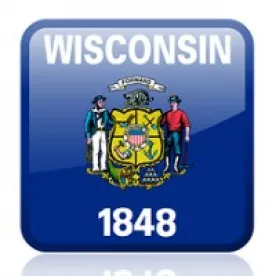Wisconsin landowners who have their property taken without formal eminent domain proceedings can bring their own inverse condemnation actions for just compensation. A recent Wisconsin Court of Appeals decision addressed whether WisDOT’s road relocation amounted to a taking. Aamaans Properties, Inc. v. Wisconsin Dep’t of Transp., No. 2017AP1220, unpublished slip op. (Wis. Ct. App. Dec. 26, 2018)(per curiam) petition for review filed (Wis. Jan. 25, 2019).
In 2002, Aamaans paid $975,000 for a property in Rock County along Arthur Drive, which intersected with State Trunk Highway 26 (“STH 26”) near the property’s corner. Aamaans improved the property, and by 2011, it contained a national chain restaurant, convenience store, fuel pumps, and a car wash.
Between 2011 and 2013, WisDOT relocated a portion of STH 26, which meant this highway no longer intersected with Arthur Drive. There was neither a direct taking, nor (as the opinion notes) “did the relocation of the highway affect the property’s access to or from Arthur Drive.” Depending upon whether they were travelling southbound or northbound along the newly-relocated STH 26, travelers were required to drive between 1.4 and 1.8 additional miles to gain access to the property after the highway was relocated.
Even so, after the highway’s relocation, McDonald’s closed its restaurant on the property and nothing else occupied the building shell. By 2013, the opinion notes that an appraiser concluded the property’s fair market value had fallen to $332,500. Aamaans lost the property in a foreclosure proceeding.
Aamaans brought an inverse condemnation action, alleging that the highway’s relocation amounted to taking. The circuit court rejected Aamaans’ arguments, concluding that no taking had occurred. Aamaans appealed. The court of appeals narrowly interpreted the concept of a “regulatory taking,” finding that Aamaans was required to demonstrate that “there is a legally imposed restriction upon the property’s use.” Citing Eberle v. Dane County Board of Adjustment, 227 Wis. 2d 609, 622, 595 N.W.2d 730 (1999), the court found that regulatory takings do not include harm arising as “an indirect result of government action.”
Relying on the United States Supreme Court’s opinion in Penn Central Transportation Co. v. City of New York, 438 U.S. 104 (1978), Aamaans argued that the relocation of STH 26 frustrated Aamaans’ investment-backed expectations of having a multi-faceted travel center, which was dependent on convenient access to the highway. Implied in this argument appears to have been that the relocation of STH 26 was such an action that could give rise to a regulatory taking in certain circumstances. However, the court of appeals disagreed with this premise, concluding, “Aamaans is not restricted by any governmental regulation dictating how Aamaans may use or develop its property.”
Despite acknowledging the Penn Central principle that “the extent to which the regulation has interfered with distinct investment-backed expectations are, of course, relevant considerations in assessing whether a regulatory taking has occurred,” the court of appeals retreated to the regulatory taking standard requiring a property owner to demonstrate that the regulation of its property has denied the owner “all or substantially all practical uses of [the] property.”
The court’s opinion went on to discuss and reject Aamaans other arguments. In short, the court of appeals concluded that there was no error in finding that Aamaans was unable to maintain a claim for inverse condemnation on the record below.
As a per curiam opinion, it is unlikely to be cited in the future. Still, the case is notable for this court’s narrow view of the “regulatory takings” analysis. As suggested above, the court’s decision relied on a very narrow and literal interpretation as to what kind of an action can amount to a “regulatory taking.” Such a reading could possibly suggest that a claim of inverse condemnation would never be available following an act of WisDOT. Regardless of its reading of the Wisconsin Supreme Court’s holding in Hoffer Properties, LLC v. DOT, the appeals court’s understanding of what can amount to a regulatory taking (regulation only) would conflict with the definition used by the Wisconsin Supreme Court in a recent decision, Adams Outdoor Advert. Ltd. P'ship v. City of Madison, 2018 WI 70, ¶ 53, 382 Wis. 2d 377, 914 N.W.2d 660 (“A property owner proves a taking when a government regulation or action denies him all or substantially all practical uses of his property”)(emphasis added). This “or action” point is found elsewhere in Wisconsin case law, including one case cited in this opinion. See Eberle v. Dane County Board of Adjustment, 227 Wis. 2d 609, 622, 595 N.W.2d 730 (1999) (“[t]akings which do not involve physical invasions of land are called regulatory takings” and “a regulation or government action must deny the landowner all or substantially all practical uses of a property in order to be considered a taking for which compensation is required”).
The landowner has filed a petition for the Wisconsin Supreme Court to grant review of this decision. If review is granted, expect to see the property owner challenge of the court of appeals’ narrow interpretation of what constitutes a regulatory taking, combined with a Penn Central threshold argument. WisDOT, in turn, will likely focus its defense on 118th St. Kenosha, LLC v. DOT, 2014 WI 125, 359 Wis. 2d 30, 856 N.W.2d 486. The court of appeals concluded its analysis by finding that the “governing principle in this case is that the relocation of a highway, by itself, is not compensable: ‘compensation for a taking cannot include damages for a lost point of access to a highway if the point of access was lost because of an act separate from the taking, such as the highway’s relocation.’ 118th St., 359 Wis. 2d 30, ¶46.”




 />i
/>i

